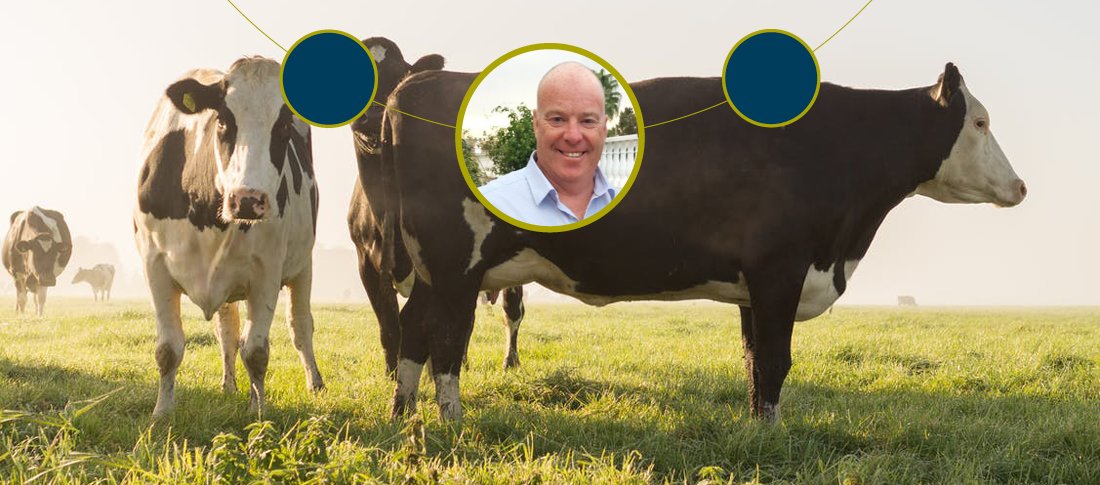Over the next 3 months, the #MegaFertility campaign will be sharing the opinions of dairy experts from across the industry to raise awareness of some of the issues around dairy cow fertility.
Cows are at their most productive when they are healthy and happy. Yet milk production itself can have a negative impact on fertility rates. It’s something of a catch 22, but correct nutrition holds the key to success.
How to reduce the impact of dairy production on herd health
It should come as no surprise to dairy farmers that milk production is no walk in the park (or field) for the cows themselves. The massive energy demands of milk production can be responsible for big drops in fertility rates, which can have a tangible impact on your profitability. You want your cows to maintain reliable ovulation cycles and to birth healthy calves. But how can this be assured at the same time as maintaining milk production? The answer lies in nutrition.
We spoke to Neil Birkett, a Leeds-based expert on bovine nutrition, to shine some light on how best to mitigate the effects of dairy production on herd health and fertility.
Milk production is tough on the biology of a cow, placing large demands on the body at the same time as causing a dramatic loss in appetite. This has the effect of creating an NEB (negative energy balance), which then causes BCS (body condition score) reductions.
BCS losses can lead to reduced milk production while increasing the time to first ovulation. Conception rates to first service can drop too. Excessive BCS loss also tends to override any other factors or supplements for fertility enhancement. The impact of this can be significant for dairy farmers, so it’s important to offset the risks to BCS loss - and the best time to do that is during early lactation.
Feeding the right fats
When trying to replenish depleted energy reserves in cows, the best method is to use specialist feed fats. These products increase the energy density of the cow’s feed, and thus decrease the risk of NEB. Yet not all fats are created equal.
High C16:0 feed fats encourage good yields with high milk fat percentage BUT they will dramatically increase BCS losses in fresh cows, as the high merit cows partition this fat to the udders for yield and milk fat. That means high C16:0 fats don’t have a hugely beneficial impact on fertility.
Meanwhile high C18:1 fats partition energy to both milk yield and the body condition of the cow. In other words, these fats help to protect the cow from excessive BCS loss during the fresh period, while simultaneously boosting follicle and egg development. The problem here however is that when C18:1 and C18:3 enter the rumen, the cow’s body naturally converts it into C18:0, reducing digestibility and removing the positive impacts on fertility and BCS loss that C18:1 can bring.
>> How to maintain a healthy rumen in dairy cattle
The best of both worlds...
So what’s the answer? Well, feed fats must be rumen-protected so that they can pass through the cow’s body in the intended form. Mega-Max feed is ideal in that it delivers C18:1 in a protected form, passing through the rumen and into the abomasum as desired.
Along with high levels of C18:1, C16:0 is delivered too. This combination of nutrients brings benefits to both yield and body condition as well as milk fat percentage. This seems to me to be the perfect solution to the NEB caused by milk production.
>> Meet the fats that can transform dairy cows’ health and productivity
Introducing Mega-Max
So there you have it. If your cows are experiencing negative effects during milk production, Mega-Max can be the answer to a critical problem. This multipurpose fat supplement is proven to improve milk yield, milk fat, fertility and body condition throughout lactation. Do yourself and (your herd) a favour and find out more here.
